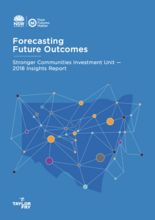Displaying 761 - 770 of 2214
This country care review includes the care-related Concluding Observations adopted by the Committee on the Rights of the Child.
This open access study examined the feasibility and acceptability of a randomized controlled trial (RCT) of mentalization-based therapy (MBT), delivered in a family-format, for children who are in foster care in the UK.
As foster and kinship carers are central to the lives of looked after children, it is important to recognise their unmet needs and the impact of these on the caring task. This article explores these issues by applying a hierarchy of needs to the foster and kinship care context, drawing on the perspectives of those involved, a group of Australian foster and kinship carers.
The current study is the first to explore the perspectives of foster carers and clinicians working in Child and Adolescent Mental Health Services (CAMHS) in relation to the use of two brief screening tools: the Strengths and Difficulties Questionnaire (SDQ) and the Brief Assessment Checklists (BACs).
The aim of this article is to raise the voices of a group of birth mothers, a historically stigmatised, powerless and neglected group, with substantial experience of counselling following the loss of a child.
The aim of this article is to analyse the evaluations made by the main stakeholders involved in the school situation of young people in residential care and propose an explanatory model of their level of school satisfaction (SS) based on variables related to the youngsters' subjective well-being. The sample was composed of 219 subjects from five European countries (Germany, Austria, Croatia, Spain and France), including 75 young people, 75 caregivers, and 69 teachers.
This report, which was authored by Taylor Fry with support from Their Futures Matter (TFM) - a landmark reform of the Government of New South Wales (NSW), Australia to deliver improved outcomes for vulnerable children, young people and their families - and stakeholder agencies, presents key results and insights from the TFM Investment Model, an actuarial model of future outcomes and costs of providing key government services to children and young people in NSW.
The aim of this article is to analyse the evaluations made by the main stakeholders involved in the school situation of young people in residential care and propose an explanatory model of their level of school satisfaction (SS) based on variables related to the youngsters' subjective well-being.
This study explores facilitators of and barriers to effective collaboration between workers at partner organizations working on a program focused on the reunification of housing-unstable families with their children in out-of-home placement in the US.
This review examines the legislative history leading up to extended care, the research on youth leaving foster care, youth preferences for extended care, the competition of extended care with permanency options, and the effects of extended foster care on transition-age youth.


